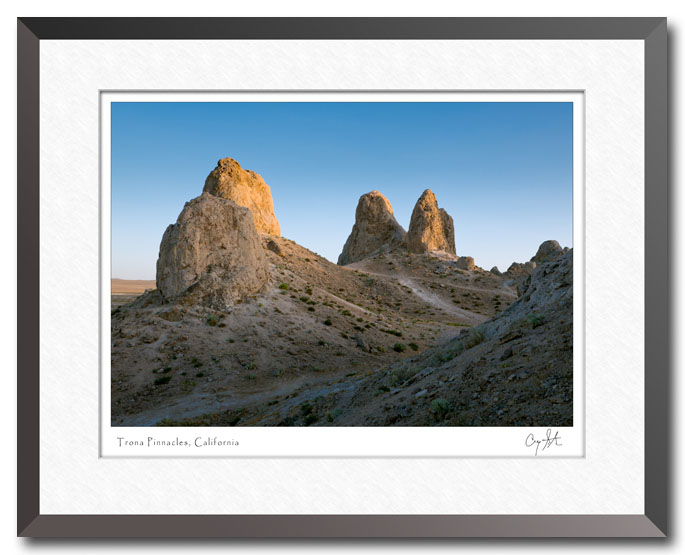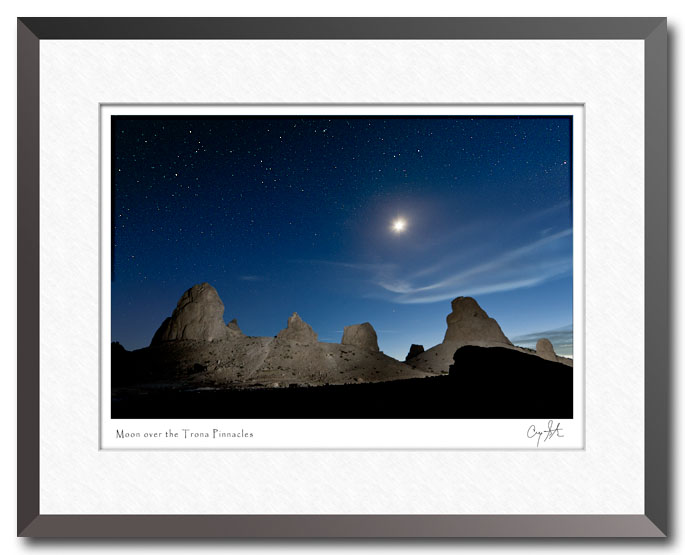Have you ever heard of the Trona Pinnacles? Well, I hadn’t either until I started researching interesting locations for a quick trip. They’re located just south of Death Valley National Park and about 20 miles east of Ridgecrest, California. The area is part of the Searles Dry Lake basin and were formed underwater between 10,000 and 100,000 years ago. At that time, the Searles Lake formed a link in an interconnected chain of lakes stretching from Mono Lake to Death Valley. The tuffas at Trona reach as high as 140 feet!

I’m always amazed at the circles of life. Last year, I posted images from Mono Lake. But, the tuffas at Trona seem huge compared to those at Mono Lake. Of course, many of the tuffas at Mono Lake are partially submerged, and I don’t know how much of the tuffa is under water. But where you can walk around them, they tend to be 10 to 20 feet high, so much smaller than those at Trona.

We did a fair amount of research before heading out. I noticed that the crescent moon would be fairly low on the western horizon at sunset, so I decided to try to get some night photos including the stars. I also packed a couple of strobes and radio controlled remote triggers so that I could add some light to the tuffas. The photo below is one of the results.
Note – to see the stars in the photo more clearly, click on the photo to see a larger version.
The photo is pretty straightforward technically. Obviously, you need a tripod and a long exposure. The main parameter of concern is the length of time for the exposure. I was using an extreme wide angle lens, so 30 seconds is about the longest exposure you can use before the earth’s rotation turns the stars into streaks instead of points of light. In fact, if you view the larger verison of the image, you’ll see that the stars actually appear as short streaks, about four times longer than they are wide. This image ended up at ISO 640 at f/5.6 for 30 seconds. To light up the tuffas, I had two strobes positioned behind a large outcropping and aimed at the tuffas in the distance. In order to build enough exposure from the strobes, I had to fire them 10 to 12 times during the 30 second exposure.

